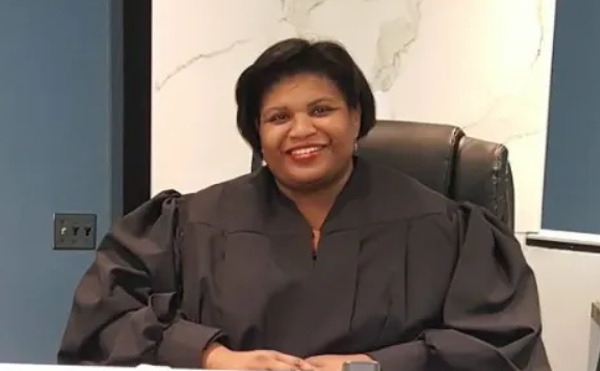In a way we begin perfect, starting out starry-eyed with “anything’s possible” embedded in our tiny minds. However, we all learn young that perfection is a far cry from reality and, quite frankly, imperfect. Our naive Gardens of Eden are ripped away apple by apple, branch by branch, then filled instead with hard truths such as homework, betrayal and acne. Unless of course you are perfect, in which case three things come to mind: Barbie, Fabio and Mariah Carey. All three are all-blond, but only two are currently starring in their first feature-length films.
See singing sensation Mariah Carey in the theatrical spectacle Glitter, a rags-to-shiny-evening-gowns Cinderella story. And then there’s the queen of plastic, that fashion chameleon, starring in Barbie in The Nutcracker, recently released on VHS and available on DVD Oct. 23, a reckless romp with mouse kings, wooden men and evil enchantments. No, they’re not porn flicks — these are multimillion-dollar, sparkly showcases on film for two perfect women, I mean toys, I mean tried-and-true money-makers, one plastic perfection and the other resembling plastic perfection.
Although Glitter hit the big screens on Sept. 21, you’ll be hard-pressed to find it still showing. I searched high and low until I found a dark theater with one anxious little girl and her sleeping father to keep me company. “Are you excited?” “Yes,” she twittered. Twenty minutes of previews and ads ended; the film began and I finally gazed upon Mariah’s incontestably cute face — those Disney eyebrows, the perfectly rounded cheekbones. I couldn’t keep thoughts about the Pillsbury Doughboy from seeping into my skull. There she was as Billy Frank, a hapless abandoned urchin with an incredible voice working sleazy dance clubs by shaking and singing to house music.
She must be OK with it, because she’s always smiling. Things happen and, lo and behold, Billy gets her big break. This script, littered with glitter and custom-made to accommodate Mariah, is reminiscent of her life: Both are on their own at a young age; both begin by singing backup and both slip demo tapes to record execs, thus procuring their stranglehold on stardom — a generic trail to the top lacking originality and substance.
Unfettered by the plot, I found myself drifting off into a strange land where, all of a sudden, I began to anticipate Mariah’s next outfit and hairstyle. With the story set in the fashion upheaval known as the ’80s, Mariah’s head is home to the Farrah flip, the Marcia straight blond, the sidesaddle ponytail, the “I Dream of Jeannie” topknot. Underneath she dons an array of Vogue oddities: leopard teddies, gold pantsuits, silver bikinis, pink glimmering evening gowns, a white tank top with “princess” printed in silver glitter across the front, and a curious and nebulous silver slash always painted somewhere on her glistening torso. Will it be on her shoulder next? Or maybe her back or collarbone? The teenager inside me had awoken.
But come on, Mariah, let’s face it: Barbie has that haute-couture edge with the ability to wear anything and be anybody. She’s black; she’s white; she’s American Indian; she’s Wicked Witch Barbie, Scarlett O’Hara Barbie, “Star Trek” Barbie, Suburban Shopper Barbie, Pirate Barbie, Cheerleader Barbie; she’s ’50s, ’60s, hippie Barbie; she’s Cher; she’s the Goddess of Beauty; she is “I Dream of Jeannie.” But you’d never know it from the looks of Barbie in the Nutcracker.
Thanks to the wonders of computer animation, this paper doll-turned-full-body-resin superstar is flung into a world of rubbery, watered-down, tubular beings with no contrast or ability for quick, natural movements — and a script to match. Although Barbie practically reads a novel (compared to the scant amount of dialogue Mariah utters) and displays myriad facial expressions (Mariah is limited to two: happy and sad, like a dancing-and-singing, comedy-and-tragedy mask), her greatest talents are brushed over.
Since this vehicle is based on the classic E.T.A. Hoffmann tale, The Nutcracker, Barbie is bound to the character of Clara and limited to two, maybe three outfits and hairstyles. The majority of this 78-minute pretense is filled with Clara’s dull, modest, pink holiday dress accented with white lace and a schoolgirl-straight blond do. Not until Barbie becomes the Sugar Plum Princess (oops, I gave it away) do we get a taste of her natural talents: In a magical mist of fairy dust, a tiara manifests on top of her head; her hair gets big and curly, and that drab dress becomes a poofy, shimmering, glimmering pink tutu with toe shoes to match. All the bad spells are broken; all the bad fashion has disappeared, and the true Princess of Plums dances the Nutcracker ballet with Prince Eric. Phew!
Both films are filled with plenty of sparkles and glitter, but neither does justice to the princesses they serve. Mariah really can sing. She warbles around melody lines like a butterfly in heat with a seven-octave range and lungs to back it up. Glitter may not win any new fans for Mariah, but record sales from existing devotees will make up for that. And Barbie will be forever young, forever fashionable and, most likely, forever marketable, despite the lack of creative imagination behind Barbie in the Nutcracker. The two are adored by far too many to let celluloid misfortunes stop them.
Anita Schmaltz writes about theater and performance for Metro Times. E-mail her at [email protected]




